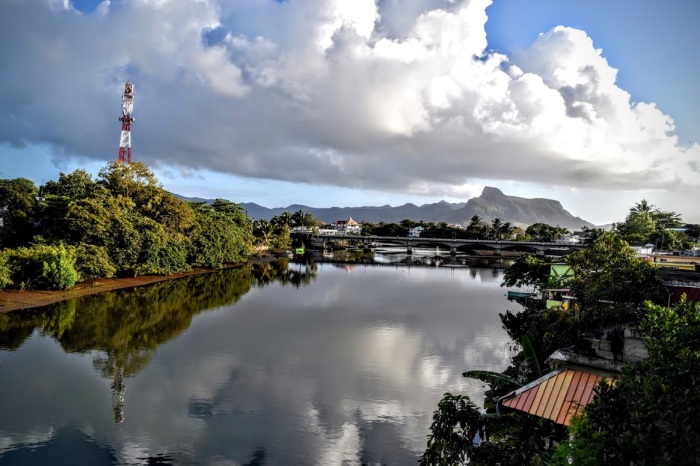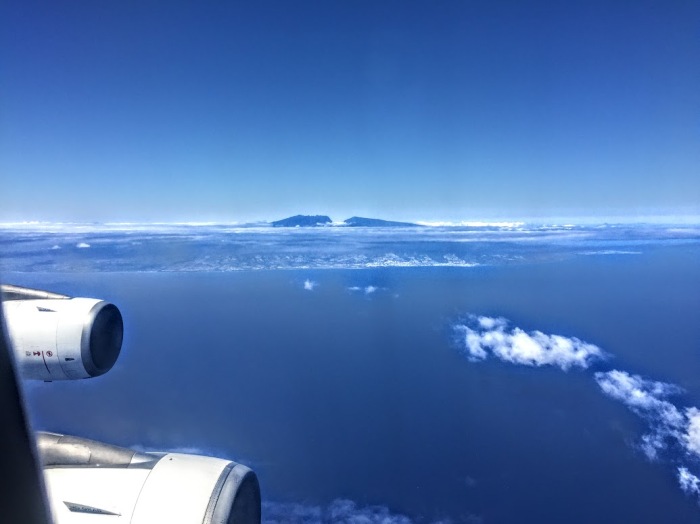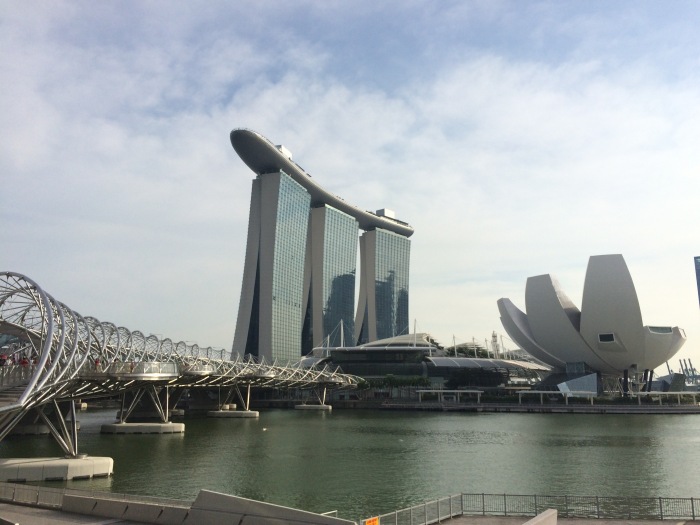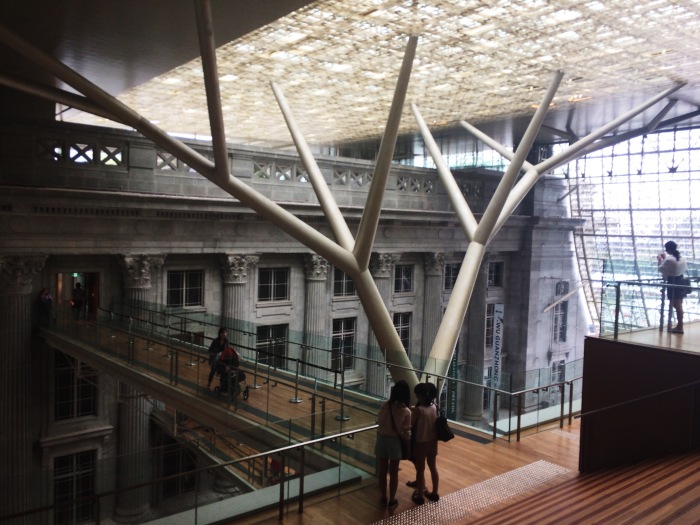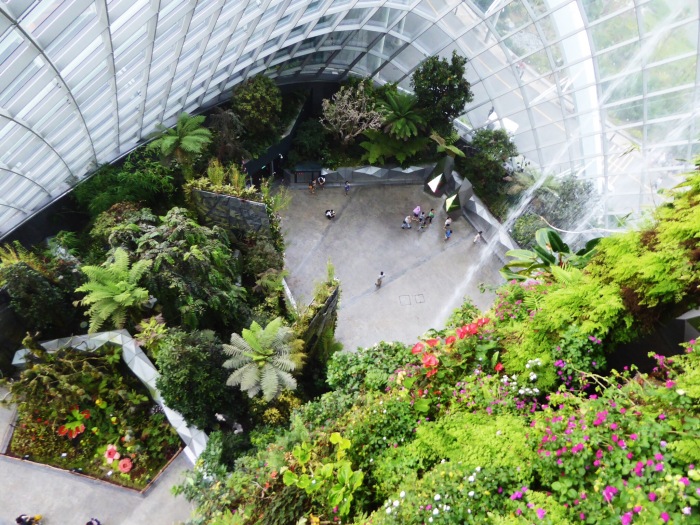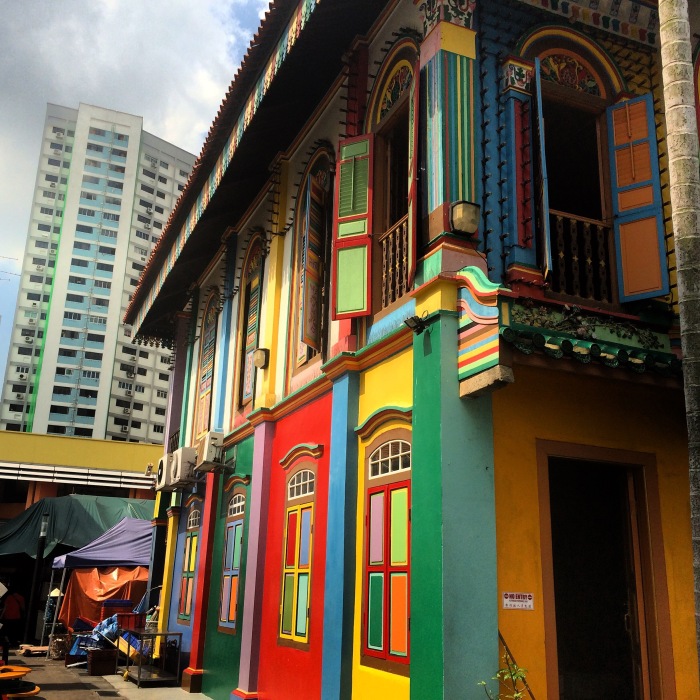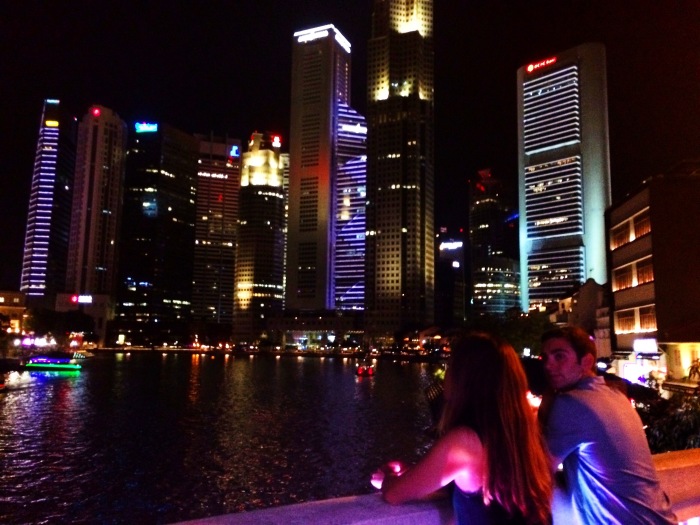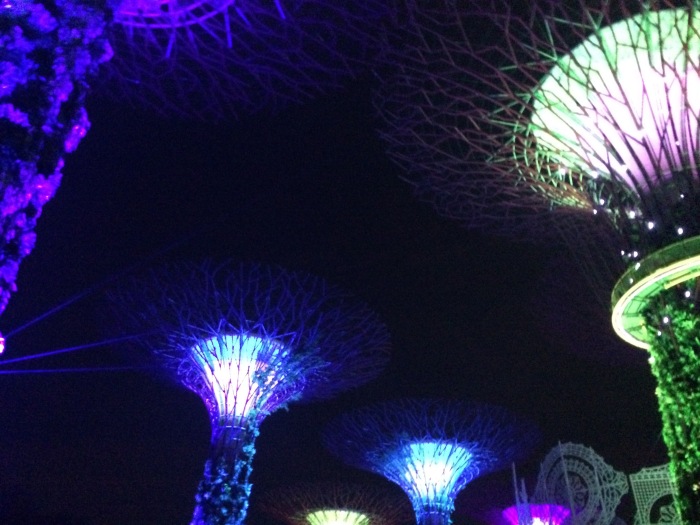Lodging
The Port by Quarters Hostel, which I recommend. Though it’s in Boat Quay, which is seedy by Singaporean standards (think of a Cours Saleya-style tourist trap), the location is perfectly central to all sights in Singapore. The rates are affordable, breakfast is included, wifi is free and works well, lockers are secure, the rooms are air conditioned, and it’s very clean. Though marketed as “rooms,”they just have cubby-style beds, but still an upgrade in privacy and comfort from most hostel bunks. Beware that they will charge you 5% extra to pay by card, and there is a 20 SD deposit for the room key.
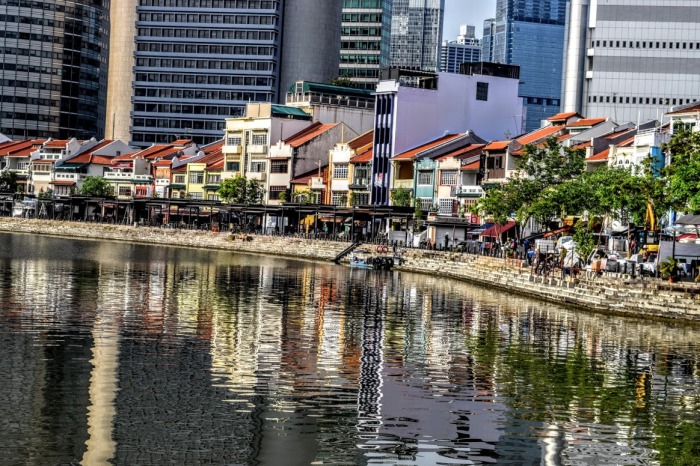

Transport
Singapore is a delightful city to get around. The MRT (metro) is surprisingly cheap and goes almost everywhere. I also walked around the city a lot– though it’s often boiling hot, the city is built well for pedestrians. Rather than crosswalks, there are overpasses and underpasses all over the place, which takes more time but is much less stressful than trying to cross the street.
People
English is the main language here, so Anglophones will have no problem. Some people in the service industry aren’t from Singapore and aren’t as confident with their English, but I didn’t have any major communication issues. I met a lot of extremely friendly people who wanted to know where I was from and who congratulated me for traveling alone. My impression is that this global city is extremely friendly to foreigners and they’re happy to share their home with us!
Safety
I felt extremely safe in Singapore at all hours of the day as a young woman traveling alone. There were always people out and almost all of them speak English and want to help you. I was never harassed or cat-called. If you do have any issue, I would suggest dipping into a hotel or business center lobby and asking the host for help.
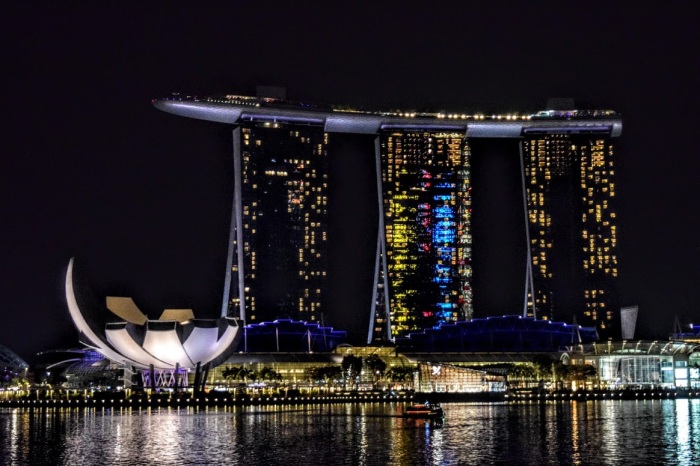
Bodily functions
Tap water is fine to drink and toilets are easy to find. Both are almost always free. Beware of getting overheated in this hot and humid city.
Running
Despite the heat and humidity, I saw many runners out at all times of day all around the city. Singapore is friendly to runners, and female solo runners should have no problem.
Fashion
Most people wear business attire, are amazingly thin, and seem un-affected by the heat. It is common for women to wear heels, but many women wear flat work shoes as well.
I noticed a lot of people wearing false contact lenses as well. Many of them didn’t even seem to be for color, since they were brown, but it had the effect of making people look a little bit like Barbie dolls. It seemed especially popular among flight attendants.
Museums
National Gallery: On a Wednesday morning in September, I was the only person in an enormous museum. Guards were eager to talk to me about the art and where I’m from. The gallery mostly hosts Asian artwork in its permanent collection, and no special exhibitions were open when I was there. Admission costs 15 Singaporean dollars for students, and is worthwhile even if their art doesn’t interest you due to the architecture. Built on the old city hall and courthouse, this building is historic while also brand new. Its atriums and rooftops provide amazing views and photo opportunities. I spent 2 hours there in total.
National Museum: As with many history/anthropology museums, it is kid-oriented and has an air of nationalist propaganda. That said, I learned a ton about the history of Singapore, and the building is beautiful. When I visited, there was an exhibition of Singaporean youth photography which I really enjoyed. For 5 Singaporean dollars for students, you have little to lose. I spent an hour there.
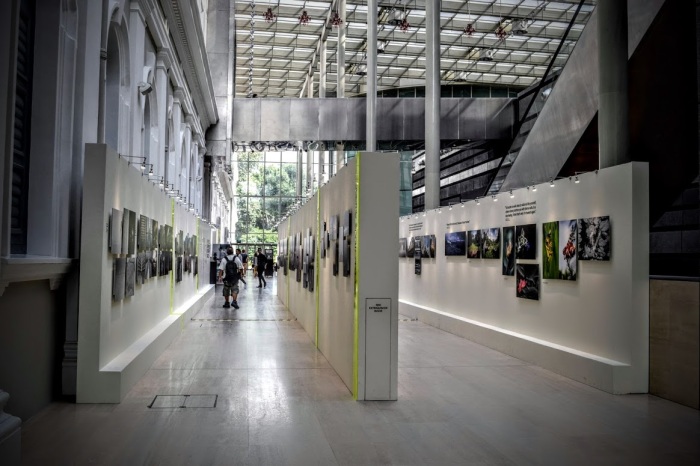
Art Science Museum: At 25 Singaporean dollars for students to enter all the galleries, this is by far the most expensive museum– and by far my favorite museum. This architectural wonder of a museum actually houses most of its galleries underground in normal-shaped rooms. The exhibits were astoundingly well-curated and had great interdisciplinary themes. My favorite was the Big Data exhibit, which gracefully combined data science, demography, sociology, engineering, and law to make the topic accessible and intriguing for anyone. I spent two hours there.
Other sights
Southern Ridges is skippable. It’s not very organized as a tourist destination, and does not have as lovely views as promised.
Marina Bay Sands Mall is an awesome place to cool off, go to the bathroom, and fill up water. It’s also quite the spectacle.
Gardens by the Bay: I’m not that into gardens, and their best spaces were closed for repair while I was there, so I’m not one to talk. This is one of Singapore’s top attractions and you may very well love it!
Restaurants
Jai Thai has evil service, but it’s the cheapest, most authentic, and quickest Thai food outside of Thailand, so I kept coming back. Order a “small” plate, which is plenty for one person, for just 6-8 Singaporean dollars.
Ya Kun Kaya Toast: You must try the kaya toast, and you must try it here! For less than 5 SD, you get the classic Singaporean dish: Little coconut and butter toasts, dipped in runny eggs mixed with soy sauce and pepper. This may sound gross. It totally looks gross. Each dish on its own is a little gross; the toasts are too dry and sweet; the eggs are too runny and salty. But put them together and it’s MAGIC.
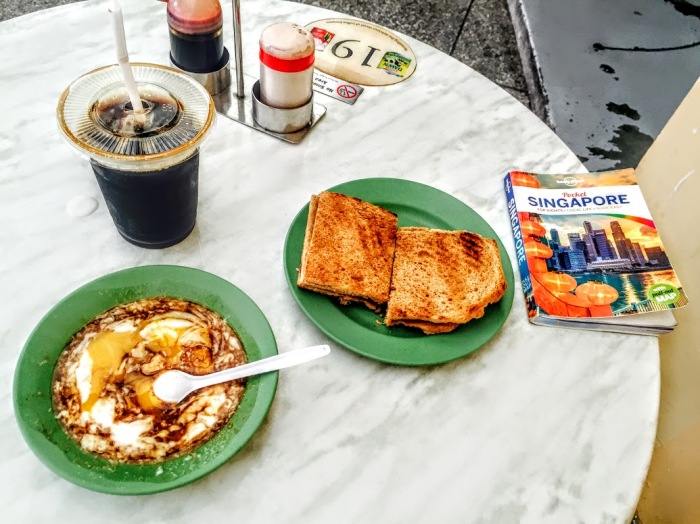
Common Man Coffee: This is an upscale hipster café that reminds me of having brunch in Washington, D.C. mixed with having coffee in Portland. Though it’s on the more expensive side, I had one of my favorite meals in Singapore here, and certainly my favorite coffee. Their menu is L.A. brunch-style– anything from a kale scramble to a “Turkish man’s breakfast” (a delightful combination of fried cheese, soft boiled eggs, and hummus). It’s out of the way at Roberts Quay, so don’t bend over backwards to go there, but definitely go if you’re in the area.
Everyone recommends Sarnies, an Australian sandwich place in Chinatown, but please skip it. They charge you 15 SD for a sandwich on Wonderbread.

A few notes on eating out:
-Service fees are added at the end, so prepare for your bill to be higher than the sum of the dishes you ordered.
-Napkins are not standard at low-end restaurants. I had to ask for them; once got charged for them; and once was shown to the sink instead.
Laws
You’ve probably heard the urban legend that it’s illegal to chew gum in Singapore (unless you have a prescription from your dentist). There’s also a 500 SD fine for eating on the subway, and a death penalty for drug traffickers. Singapore seems to take their laws pretty seriously, though I did see plenty of people jaywalking.
Miscellaneous Observations
Some museums and restaurants had scented interiors. I had never experienced such a thing before, and was pleasantly surprised when it didn’t give me a headache.
I also experienced my first outdoor air conditioning. While in some ways Singapore is very environmental and progressive, it is also upscale and over-the-top. If you eat outside at a nice enough restaurant, you may experience the phenomenon of outdoor AC.
Changi Airport
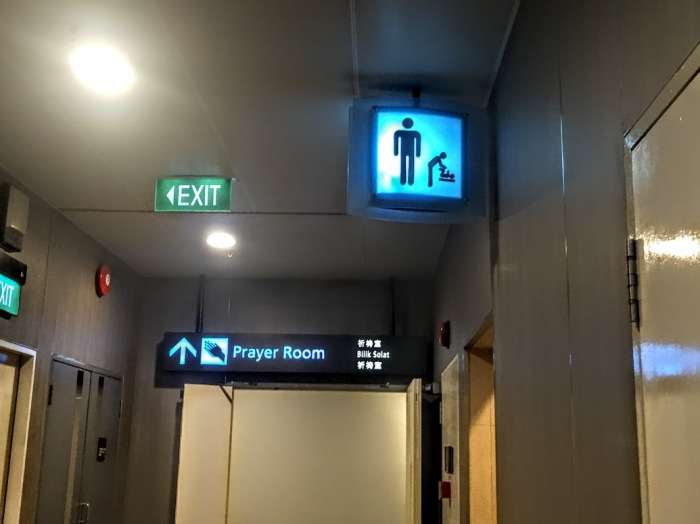
My expectations were high, as this is known as one of the world’s best airport. Immigration coming into the country took forever, but there were no lines at immigration when I departed. Security is gate-by-gate rather than at the entrance of the terminal. They had all the standard food options– Starbucks, Subway, and local chains. What made this airport impressive to me was the advertised baby-changing table in the men’s restroom and the prayer room. Many public spaces could learn something about inclusiveness from Changi.




















